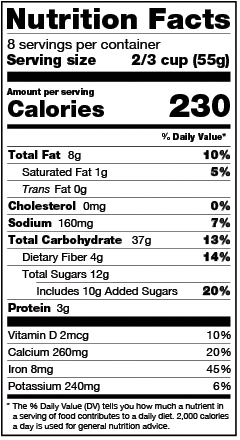
At a glance, it doesn’t look much different. But take a closer look: the Nutrition Facts Label that’s on most packaged foods and drinks is changing to help you make better choices for your health.
The new label reflects the latest science and nutrition research, plus input from the public. Some labels have already changed, and most will be updated by the end of the year. See below for some key changes to help you shop well.
Serving size
This has been updated to show how much most people eat or drink (not a recommended amount). The calories and other numbers on the label are per serving. Some new labels also list calories, etc., per-container (see it here).
Fat
The new labels no longer list “Calories from fat,” since studies show that the type of fat we eat is more important than the amount. Experts now emphasize including healthy fats, minimizing saturated fats and avoiding trans fats.
Added Sugars
The total sugars in food often include both naturally occurring sugars (such as the natural lactose sugar in yogurt) and added sugars — sweeteners added during processing, such as sucrose, dextrose, corn syrup and honey. The new label breaks out “Added Sugars” so you can identify foods with a lot of empty calories.
Vitamin D and Potassium
We don’t always get enough of these nutrients, which reduce our risks of osteoporosis and high blood pressure. They’ve been added to the new labels, replacing vitamins A and C, which most of us get plenty of.
% Daily Value
These numbers have been updated, but are still based on an average daily diet of 2,000 calories. Your calorie needs may vary. One thing to note is that 5% or less of the daily value for a nutrient is considered low, and 20% or more of the daily value is considered high.


